Commedia dell' Arte.- Album of 22 fine miniatures depicting Italian, mainly Venetian, costumes and characters, on vellum, 22 single vellum leaves mounted on paper guards, compensation guards added at regular intervals, foliation in pencil (corresponding neither to the number of leaves nor their respective position within the album), each leaf with a miniature in full colour with occasional use of gold and silver, one with a paper flap, most c.125-127 x 190-195mm. and in fine condition with only minor rubbing, 2 partly smudged, occasional staining, some repairs to leaf edges, headings written in gold, in a regular antiqua capitalis hand, modern dark blue morocco by the Italian binder Bernasconi, oblong 8vo, ?Veneto region, [first quarter of the 17th century]. ⁂ Superb album depicting a good cross-section of Venetian society at the start of the 17th century. The 22 fine, full-colour miniature drawings depict Italian costumes for men and women of different social ranks, scenes of local life, ceremonies, and characters from the Commedia dell'Arte. Twelve of these drawings depict Venetian scenes or dress, suggesting the album may have been executed in the Veneto region, particularly in Venice or Padua, leading centres not only for manuscript production and publication, but also for fashion and the trading of textiles. In the age of pre-Grand Tour travels, albums such as this provided a sort of 'book of memories', illustrated with scenes from local life, especially its ceremonies and dress. These albums were thus produced according to a traveller's individual preferences, and the drawings were rarely signed by the artists. Notably, such travel albums, and particularly those produced in the Venetian milieu, often included representations of courtesans in addition to drawings of noble or wealthy women. Two such illustrations are of especial note. The first is a drawing of a woman dyeing her hair blond, an allurement closely associated with Venice, as attested by Titian's nudes. The second shows a courtesan, ironically juxtaposed with a widow, with a moveable flap for a skirt. This conceit derives from Bertelli's Diversarum nationum habitus, though the flap is lacking in many copies of the printed book. When the flap is lifted, the woman is seen to be essentially naked, wearing only a pair of stockings with fancy ribbons and some high-heeled shoes. The remaining miniatures show various figures in a seemingly arbitrary order, including some depicting figures from the Commedia dell'Arte. Developed in 16th-century Italy, the Commedia dell'Arte is a type of theatre characterised by improvised dialogues based around plot outlines and featuring a set of stock characters. Fol. 15 presents three of the most famous: Harlequin - the darling of the audience: witty, often impertinent, and full of jokes; he and Franquatripa - whose name signifies 'nonsense', and who's a real good-for-nothing - belong to the 'Zanni' or simple folk; and Isabella, most often the beautiful girl whose adventurous path to a happy union with her beloved forms a central plotline. Closely related is the miniature entitled 'Charlatano' (fol. 18). Charlatans entertained with fantastic stories, often about illnesses and miraculous cures for which they held in stock a wide selection of 'medicine' on sale for the audience. Another aspect of the fascination with theatre and costume is illustrated by the masquerade (fol. 19), a popular pastime of the wealthy Venetians, which of course reached its annual peak at Carnival. The miniatures in the second part of the album, among which the flagellants stand out, represent the other strata of society: a peasant woman and her male counterpart, a fisherman, two vineyard workers, and two servants at leisure. This last miniature shows the pair engaged in a round of mora, a popular Italian game and early version of 'spoof' in which two players simultaneously hold up one or several fingers, each player trying at the same time to predict the nu
Commedia dell' Arte.- Album of 22 fine miniatures depicting Italian, mainly Venetian, costumes and characters, on vellum, 22 single vellum leaves mounted on paper guards, compensation guards added at regular intervals, foliation in pencil (corresponding neither to the number of leaves nor their respective position within the album), each leaf with a miniature in full colour with occasional use of gold and silver, one with a paper flap, most c.125-127 x 190-195mm. and in fine condition with only minor rubbing, 2 partly smudged, occasional staining, some repairs to leaf edges, headings written in gold, in a regular antiqua capitalis hand, modern dark blue morocco by the Italian binder Bernasconi, oblong 8vo, ?Veneto region, [first quarter of the 17th century]. ⁂ Superb album depicting a good cross-section of Venetian society at the start of the 17th century. The 22 fine, full-colour miniature drawings depict Italian costumes for men and women of different social ranks, scenes of local life, ceremonies, and characters from the Commedia dell'Arte. Twelve of these drawings depict Venetian scenes or dress, suggesting the album may have been executed in the Veneto region, particularly in Venice or Padua, leading centres not only for manuscript production and publication, but also for fashion and the trading of textiles. In the age of pre-Grand Tour travels, albums such as this provided a sort of 'book of memories', illustrated with scenes from local life, especially its ceremonies and dress. These albums were thus produced according to a traveller's individual preferences, and the drawings were rarely signed by the artists. Notably, such travel albums, and particularly those produced in the Venetian milieu, often included representations of courtesans in addition to drawings of noble or wealthy women. Two such illustrations are of especial note. The first is a drawing of a woman dyeing her hair blond, an allurement closely associated with Venice, as attested by Titian's nudes. The second shows a courtesan, ironically juxtaposed with a widow, with a moveable flap for a skirt. This conceit derives from Bertelli's Diversarum nationum habitus, though the flap is lacking in many copies of the printed book. When the flap is lifted, the woman is seen to be essentially naked, wearing only a pair of stockings with fancy ribbons and some high-heeled shoes. The remaining miniatures show various figures in a seemingly arbitrary order, including some depicting figures from the Commedia dell'Arte. Developed in 16th-century Italy, the Commedia dell'Arte is a type of theatre characterised by improvised dialogues based around plot outlines and featuring a set of stock characters. Fol. 15 presents three of the most famous: Harlequin - the darling of the audience: witty, often impertinent, and full of jokes; he and Franquatripa - whose name signifies 'nonsense', and who's a real good-for-nothing - belong to the 'Zanni' or simple folk; and Isabella, most often the beautiful girl whose adventurous path to a happy union with her beloved forms a central plotline. Closely related is the miniature entitled 'Charlatano' (fol. 18). Charlatans entertained with fantastic stories, often about illnesses and miraculous cures for which they held in stock a wide selection of 'medicine' on sale for the audience. Another aspect of the fascination with theatre and costume is illustrated by the masquerade (fol. 19), a popular pastime of the wealthy Venetians, which of course reached its annual peak at Carnival. The miniatures in the second part of the album, among which the flagellants stand out, represent the other strata of society: a peasant woman and her male counterpart, a fisherman, two vineyard workers, and two servants at leisure. This last miniature shows the pair engaged in a round of mora, a popular Italian game and early version of 'spoof' in which two players simultaneously hold up one or several fingers, each player trying at the same time to predict the nu


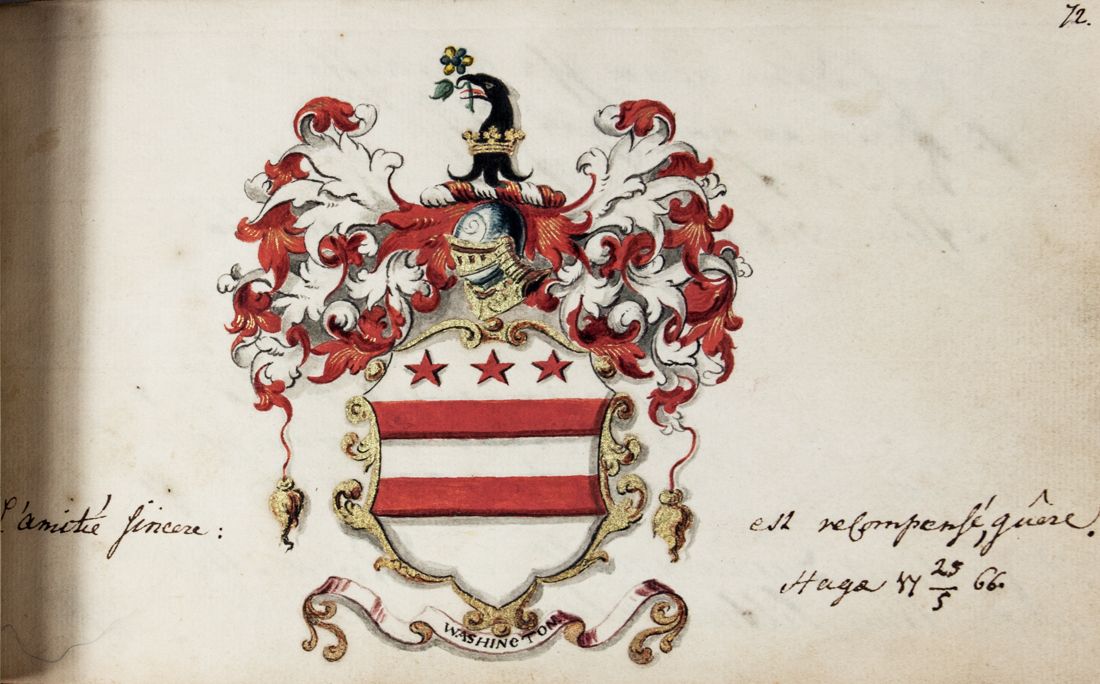

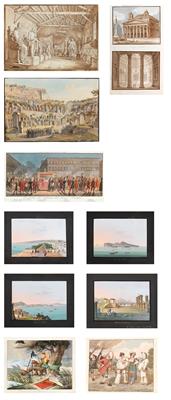
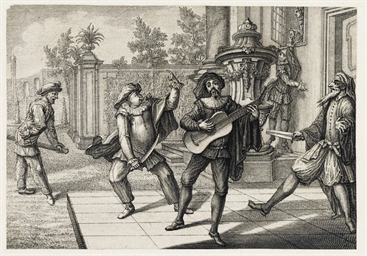
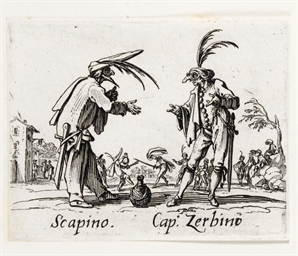

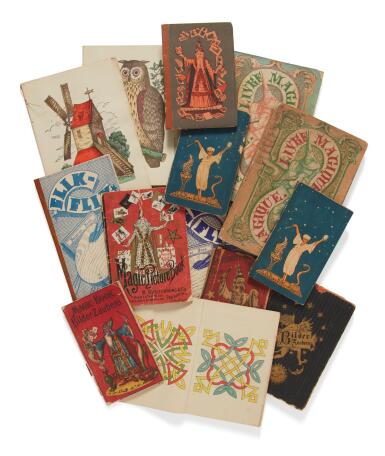





.jpg)
Try LotSearch and its premium features for 7 days - without any costs!
Be notified automatically about new items in upcoming auctions.
Create an alert